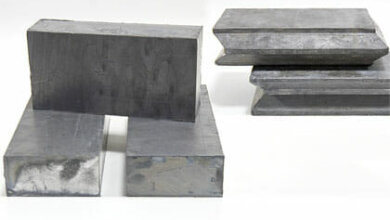Knife and Fork Bakery believes everyone should have access to tasty bread that fits their health needs. Gluten Free Bread is what many people choose when they need a safer option that still feels familiar and satisfying.
Who benefits and why?
Some people feel better when they avoid gluten. For them, gluten-free bread is not just a trend, it is a health choice. This article explains, in plain words, why gluten-free bread can be healthier for certain people. It looks at medical reasons, digestion, nutrient choices, how bread is made, and how to pick good options. It also gives practical tips for families, meal planning ideas, and answers to common questions.
Who should consider gluten-free bread?
Not everyone needs to avoid gluten. But for a number of people, going gluten-free improves daily life. The main groups who may benefit include:
People with celiac disease
Celiac disease is an autoimmune illness. When someone with celiac eats gluten, their body attacks part of the small intestine. This can cause pain, poor nutrient absorption, and many other problems. For people with this condition, gluten-free bread is essential for health.
People with non-celiac gluten sensitivity
Some people do not have celiac disease but still feel unwell after eating gluten. Symptoms can be stomach pain, tiredness, headaches, or joint pain. For these people, gluten-free bread can reduce symptoms and improve comfort.
People with wheat allergy
A wheat allergy is different from celiac disease. It is an allergic reaction to proteins in wheat. For people with this allergy, avoiding wheat — and sometimes other gluten-containing grains, is important. Gluten-free bread made from non-wheat grains helps them stay safe.
People who feel better on a different grain mix
Some people find that their digestion, energy, or mood improves when they switch to different grains. Whole grains like buckwheat, sorghum, and millet offer different nutrients and may suit some bodies better than wheat. Gluten-free bread can open up those options.
How gluten harms some people: plain explanation?
Gluten is a protein found in wheat, barley, and rye. In people with celiac disease, gluten triggers a harmful immune response. In people with sensitivity, gluten may cause discomfort even without an immune attack. Also, processed wheat products can be high in refined flours and added sugars, which many people try to avoid for health reasons.
Better digestion for many people
One of the main reasons some people prefer gluten-free bread is digestion. When a person’s body reacts to gluten, removing it can reduce symptoms like bloating, cramps, gas, and diarrhea. Many people report feeling lighter and more energetic when they switch to gluten-free bread that uses whole, natural flours.
Less inflammation and more comfort
For people with celiac disease or strong sensitivity, ongoing gluten exposure can keep inflammation active in the body. By choosing gluten-free bread, they avoid a trigger that can cause long-term harm. Over time, the gut can heal and nutrient absorption improves, which helps energy and overall health.
Different grains, different nutrients?
Gluten-free bread can be made from many grains and seeds. Each brings its own nutrients. For example:
-
Buckwheat: high in fiber and minerals, and naturally gluten-free.
-
Sorghum: a whole grain with beneficial plant compounds and energy-sustaining starch.
-
Millet: light and easy to digest with important minerals.
-
Brown rice flour: a good base that is mild in flavor.
-
Almond flour: provides protein and healthy fats.
These grains can make a loaf that is richer in fiber, vitamins, and minerals compared to breads made only from refined wheat flour. When a bread uses whole gluten-free grains, it can be a more nutrient-dense choice.
How fermentation and sourdough methods help?
Some gluten-free breads use sourdough or long fermentation. This slower process can change the grain in helpful ways. Fermentation can break down some compounds that make digestion harder and may make minerals more available. For people with sensitive digestion, slow-fermented gluten-free bread can be gentler than quick-rise loaves.
Lower blood sugar spikes for some recipes
The type of grain and the method of bread-making affect blood sugar. Breads made with whole grains, seeds, and fiber tend to raise blood sugar more slowly than breads made with white flour. This steady energy release helps people feel full longer and can be helpful for weight control and steady energy across the day.
When gluten-free is not automatically healthier?
It is important to say that not all gluten-free bread is healthy. Some packaged gluten-free breads are made with refined starches, added sugar, and many additives. These products can be low in fiber and high in calories, which does not help health. The healthier gluten-free choices are made from whole grains, real seeds, and clear ingredients.
How Knife and Fork Bakery approaches healthier gluten-free bread?
Knife and Fork Bakery focuses on real ingredients and clear methods. The bakery uses whole gluten-free grains and careful techniques to keep loaves moist and tasty without relying on refined starches or excess sugar. The bakery also prioritizes food safety and clear labeling so customers can choose the loaf that fits their health needs.
Clear labeling and ingredient lists
Every loaf shows the full ingredient list and storage advice. This helps people with allergies and sensitivities pick options they trust.
Dedicated handling and preparation
To avoid cross-contact with wheat, Knife and Fork Bakery follows strict handling rules. Separate tools, labeled storage, and careful cleaning keep gluten-free loaves safe for people who must avoid gluten.
How gluten-free bread can help with nutrient absorption?
When a person with celiac disease stops eating gluten, their intestinal lining can heal. This healing improves the body’s ability to absorb nutrients like iron, calcium, and vitamins. As nutrient absorption improves, many symptoms ease, and energy levels often rise. Choosing nutrient-rich gluten-free bread supports this recovery by providing fiber and minerals while avoiding the trigger that caused damage.
Gluten-free bread and weight management
Some people find that switching to gluten-free, whole-grain breads helps them feel fuller on less food. A loaf with good fiber and protein content slows digestion and reduces the urge to snack on high-sugar foods. That said, portion control and balanced meals still matter. Gluten-free does not mean calorie-free.
Mental clarity and mood for some people
There are reports from many people who say their mood and focus improved after removing gluten. While this is not universal and the reasons are not fully known, reducing gut distress and inflammation often helps overall well-being. For people who notice brain fog after eating gluten, choosing gluten-free bread can be part of a plan to find balance.
Choosing the right gluten-free bread: practical tips
Not all gluten-free products are equal. Here are clear tips to pick a healthier loaf:
Look for whole grains first
Choose breads that list whole grains like buckwheat, sorghum, millet, or brown rice near the top of the ingredient list.
Avoid long lists of unpronounceable additives
Shorter ingredient lists with simple foods are usually better.
Check fiber and protein
A healthy loaf often has more fiber and some protein. These nutrients help keep you full and support digestion.
Watch out for added sugars
Some packaged breads include sugar for taste and texture. Choose options with low or no added sugars when possible.
Prefer bakeries with clear safety practices
If you must avoid gluten for health reasons, bakeries that describe their handling and separation practices provide important peace of mind.
Meal ideas using gluten-free bread
A good loaf should be easy to use. Here are simple, healthy ways to include gluten-free bread in meals:
Breakfast
Avocado toast on a slice of toasted gluten-free bread, topped with a sprinkle of seeds and a squeeze of lemon.
Lunch
A sandwich with roasted vegetables, hummus, and a lean protein like turkey or grilled tofu.
Snack
A slice with nut butter and banana slices.
Dinner
Warm slices served with soup or a hearty salad for a balanced plate.
How families can make the switch smoothly?
For homes where only some members need gluten-free food, planning makes life easier:
-
Keep gluten-free bread in a separate, labeled area.
-
Use separate toasters or toaster bags to avoid cross-contact.
-
Buy a sturdy loaf that toasts and holds fillings for mixed-diet meals.
-
Start with one or two staple loaves to learn which the family prefers.
Storage and freshness tips
Gluten-free bread can dry out faster. These tips help keep it fresh:
-
Slice and freeze extra portions to use later.
-
Toast directly from frozen for a quick fresh taste.
-
Store the daily loaf in a bread box or wrapped in a cloth to maintain moisture.
-
For longer storage, freeze whole loaves tightly wrapped.
Common myths and honest answers
Myth: Gluten-free bread is always healthier.
Answer: Not always. It depends on ingredients. Whole-grain gluten-free loaves can be healthier, but refined gluten-free products are not better.
Myth: Gluten-free bread has no nutrients.
Answer: Many gluten-free loaves use nutrient-rich grains and seeds. Good recipes include fiber, vitamins, and minerals.
Myth: Going gluten-free helps everyone lose weight.
Answer: Not everyone loses weight. Better choices can help, but balanced eating and activity matter most.
How to read labels? A quick guide
When buying gluten-free bread, look for:
-
The word “gluten-free” on the package if needed for medical reasons.
-
Simple, whole ingredients first.
-
Fiber and protein content on the nutrition facts.
-
Allergen statements and handling notes.
-
Storage and serving tips to get the best results at home.
How a bakery ensures safety and trust?
Bakeries that make gluten-free bread for people with health needs follow clear steps:
-
Use separate tools and pans for gluten-free production.
-
Store flours and mixes in closed, labeled containers.
-
Train staff on cleaning and cross-contact prevention.
-
List ingredients and handling practices clearly for customers.
These steps help protect customers who need gluten-free products for medical reasons.
Where to buy: local shop or online?
Both options work. Buying locally lets you ask questions in person. Buying online gives access to specialty loaves and clear ingredient pages. If buying online, choose bakeries that show photos, ingredient lists, and handling information. Knife and Fork Bakery offers detailed product descriptions and clear pickup or delivery options so customers can pick what fits their needs.
Cost and value
Gluten-free bread can cost more than ordinary wheat bread. This is because specialty flours are often pricier and the bakery may use smaller batches and careful handling. Many people find the cost worth the health benefits and peace of mind. To save money, consider freezing slices and buying in small bulk amounts when you find a loaf you love.
Recipes and variations to try at home
For home bakers, simple gluten-free recipes can be rewarding. Look for blends that pair a sturdy flour (like sorghum or brown rice) with a light starch (like tapioca or potato starch) and an effective binder (like psyllium). Small additions like seeds, nuts, or dried herbs can make the bread more nutritious and tasty.
Special cases: children and gluten-free bread
If a child must avoid gluten, a varied and balanced approach helps. Choose breads that include whole grains and seeds, and pair bread with proteins and vegetables to create balanced meals. Work with a healthcare provider or nutritionist if you are concerned about growth or nutrient intake.
When to get medical advice
If someone suspects celiac disease or has clear reactions to gluten, they should seek medical testing and advice before switching diets. For accurate diagnosis it is important to test while still eating gluten. A doctor or dietitian can help plan safe and nutritious gluten-free eating.
Final checklist for choosing healthy gluten-free bread
-
Check for whole grains and simple ingredients.
-
Avoid added sugars and excessive refined starches.
-
Choose bakeries with clear safety and handling practices.
-
Freeze and store wisely to keep bread fresh.
-
Pair bread with proteins and vegetables for balanced meals.
Conclusion
Knife and Fork Bakery sees that gluten-free bread can be a healthier option for certain people. For those with celiac disease, wheat allergy, or strong gluten sensitivity, choosing gluten-free bread is not just helpful, it is necessary for health. For others, gluten-free bread made with whole grains and seeds can support better digestion, steadier energy, and improved nutrient intake. The key is to choose loaves that use whole, natural ingredients and to buy from bakeries that handle gluten-free products with care. When these elements come together, gluten-free bread becomes more than a substitute, it becomes a reliable, tasty, and health-minded choice for many households.
Here, you can read more blogs!




